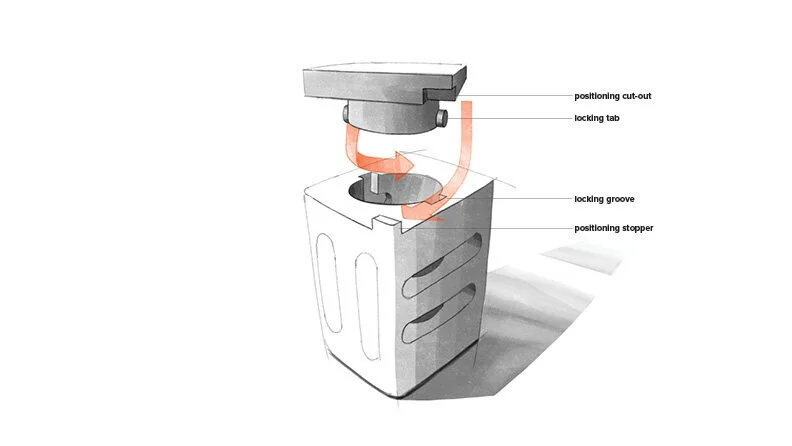
Simplify and refine
Stryker Spine
VBOSS Implant & Instrument System
Continuing our longterm collaborative relationship, Stryker Spine worked with Humanfactors to develop a new static cage system. By developing a modular system of 3 simple parts, we reduced the number of cage components from at least 30 to just 9—reducing cost, inventory complexity, and, most importantly, confusion in the OR, all while maintaining a full range of implant heights and simplifying their assembly. We designed an intuitive quick-release shaft, so that attaching implant to instrument is as simple as pushing them together. An overmolded, contoured instrument provides control within the disk space while implant delivery is just a lever-pull away.
Design Problem
The previous system required surgeons to hand cut the implant to the desired height - this called for a special mandrel and cutter to be used in the OR, and a cutting process that spent valuable space and time during the procedure. Also challenging was reliably and securely attaching the implant to the instrument.
Implant Design
Several concepts were developed, exploring various ways of attaching the implant components. Attachment and locking features take up space, the implant offers very little spare real estate, and the overall system must endure a lifetime of user activity inside the body.
Component Design
By developing a modular system of 3 simple parts, we reduced the number of cage components from at least 30 to just 9—reducing cost, inventory complexity, and, most importantly, confusion in the OR, all while maintaining a full range of implant heights and simplifying their assembly.
Industrial Design
With the implant configuration finalized, the design team could then develop an instrument to accommodate its deployment. The surgeon must be able to quickly, easily, and accurately lock the implant to the end of the instrument, then carefully position - sometimes with force - the implant into the disk space, and finally release the implant from the instrument. The surgical site can be tight, dark, and slippery, and is surrounded by delicate anatomy, so instrument issues like line of site, grip stability, comfort, and ease of use are critically important.
Rapid Prototyping
Several viable instrument designs were sketched, but models must be made in order to ascertain what types of design components are actually successful. Rapid foam models were fabricated so that the design team could dial in key feature placement, consider that most comfortable form, and even determine the best length of the implant arm.
Engineering
Previously, the surgeon needed at least three hands to effectively attach the implant to the instrument. We developed a simple, single-action, quick-release implant mount, and placed the controls up at the instrument handle so that surgeons could simply snap the implant onto the shaft, all while using only two hands.



















